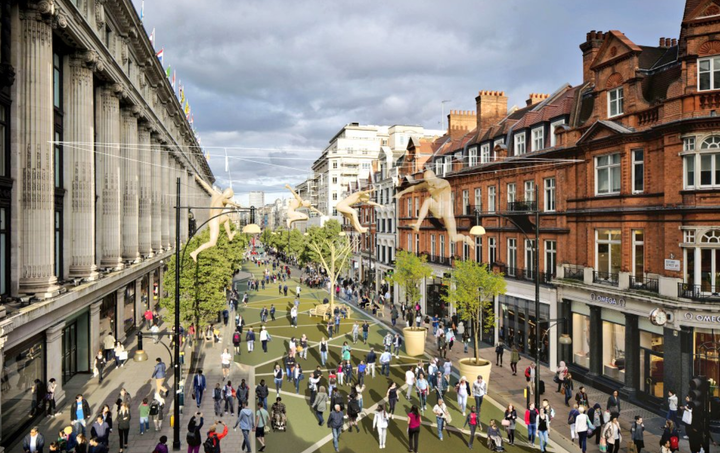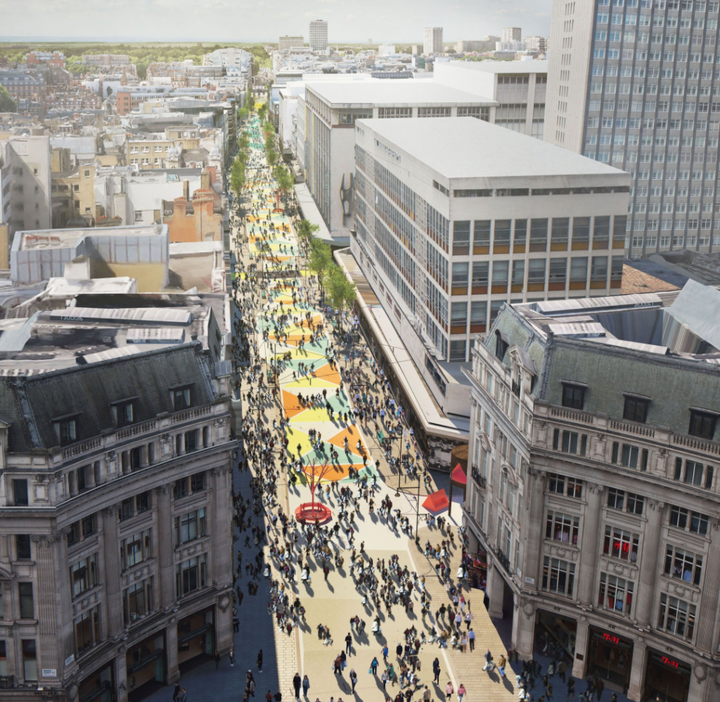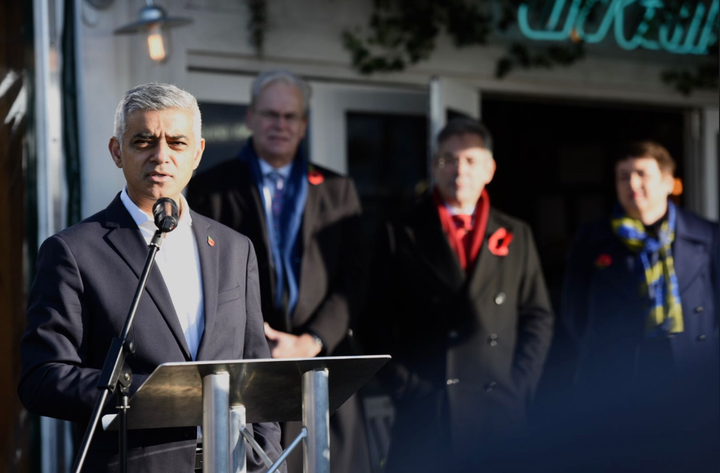Large parts of London’s Oxford Street could be pedestrianised by December 2018 under plans put forward by London Mayor Sadiq Khan to turn the strip into the “world’s best outdoor shopping experience”.
About half a mile of the street from Oxford Circus to Orchard Street could become a “traffic-free pedestrian boulevard”, the mayor said in unveiling plans on Monday that are being publicly consulted on until 17 December, 2017.

Khan said: “This is a hugely exciting moment for the capital. Oxford Street is world famous with millions of visitors every year, and in just over a year the iconic part of the street west of Oxford Circus could be transformed into a traffic-free pedestrian boulevard.
“Whether you’re a local resident, a business, or shop in some of the area’s famous stores, our plans will make the area substantially cleaner and safer for everyone, creating one of the finest public spaces in the world.”
Khan said he hoped the first stages of the “ambitious plans” would coincide with the arrival of the Elizabeth Line in central London.
Under the plans all east-west traffic will be stopped from the street (between Orchard Street and Oxford Circus) that attracts more than four million visits a week, but some north-south routes will be maintained.
The Mayor said new seating would be placed along the shopping strip to give people a chance to rest and “spend time enjoying the area” and the carriageway would be raised to be level with the existing pavements between Orchard Street and Oxford Circus during “this first stage, to make it more accessible for everyone”.
A new 800m-long work of public art could also be commissioned for the length of the former carriageway, acting as a centrepiece for the transformed street, the plans stated.

Cyclists would not be able to ride in the pedestrianised area, but Transport for London (TfL) and Westminster City Council is to consult, during Summer 2018, on “new high-quality cycle routes” along quieter roads to the north and south of Oxford Street.
In all, at least 25 new pedestrian crossings would be installed across the area, all of which will use energy-efficient LED lighting and have Pedestrian Countdown technology, the Mayor said, adding that traffic signals across the West End would also be altered and improved to manage any traffic impacts.
According to the plans, new and extended taxi ranks would be created close to Oxford Street to allow Black Cabs to continue to pick up and drop off customers. When combined with other taxi ranks being built and extended across the area, rank spaces will increase by 20 per cent by 2020, Khan said.
Taxis would also still be able to cross Oxford Street at Duke Street, Stratford Place, Vere Street and Harewood Place.
Despite this the Licensed Taxi Drivers’ Association (LTDA) is “disappointed” by the proposed plans which it says “presents a major threat to the West End as a whole” and will significantly impact the disabled.
LTDA chairman Richard Massett said: “Forcing traffic onto neighbouring streets will merely shift congestion and pollution, all the while making it far harder to visit London’s premier retail destination.
“The loss of taxi access to this section of Oxford Street will cause considerable inconvenience to disabled passengers, many of whom rely upon London’s fully-accessible taxi fleet to get around safely and conveniently. The door-to-door service that taxis offer are also relied upon by the millions of tourists who visit Oxford Street every year. Their needs have clearly not been considered.”
Massett said it was “surprising” that Tfl and the council had chosen to pursue the plans given “their own consultation showed that there is significant opposition amongst retailers and local residents to pedestrianisation”.
He added: “We would encourage everyone to respond to the consultation expressing their views, in order to make their concerns heard.”

The Mayor’s office said that since summer 2016, TfL had been working to reduce the number of buses on Oxford Street by 40 per cent and the service would drop off further once with Elizabeth line was introduced.
Khan said along with the arrival of the Elizabeth Line, Oxford Street would be “truly transformed” over the coming years and pledged to work closely with residents, businesses and Westminster Council to ensure “plans are the very best they can be”.
He added authorities would invest in wider pavements, pedestrian crossings, more taxi ranks and further cycling infrastructure to “support everyone living and working in the wider area”.

Westminster City Council Deputy Leader Robert Davis encouraged people to take part in the consultation: “Protecting and improving the quality of life for residents in the surrounding area will be a key consideration, it’s crucial that everyone knows that we are listening and that they can help shape our plans.”
Jace Tyrrell, Chief Executive of New West End Company, welcomed the announcement: “After years of campaigning, it’s excellent news finally to see commitment from our politicians to a game-changing transformation of Oxford Street. Removing the wall of red buses from Oxford Street will reduce congestion and improve air quality – improvements which must also be capitalised on across Regent Street, Bond Street and the wider West End.”
Xavier Brice, Chief Executive of walking and cycling charity, Sustrans, said the transformation will give Londoners “room to breathe in the heart of the city”.
“This is a crucial step forward in freeing up space for people, instead of metal boxes. Making this iconic destination free of traffic, free of exhaust fumes and open for all to enjoy is vital at a time when London is facing an air pollution crisis.”